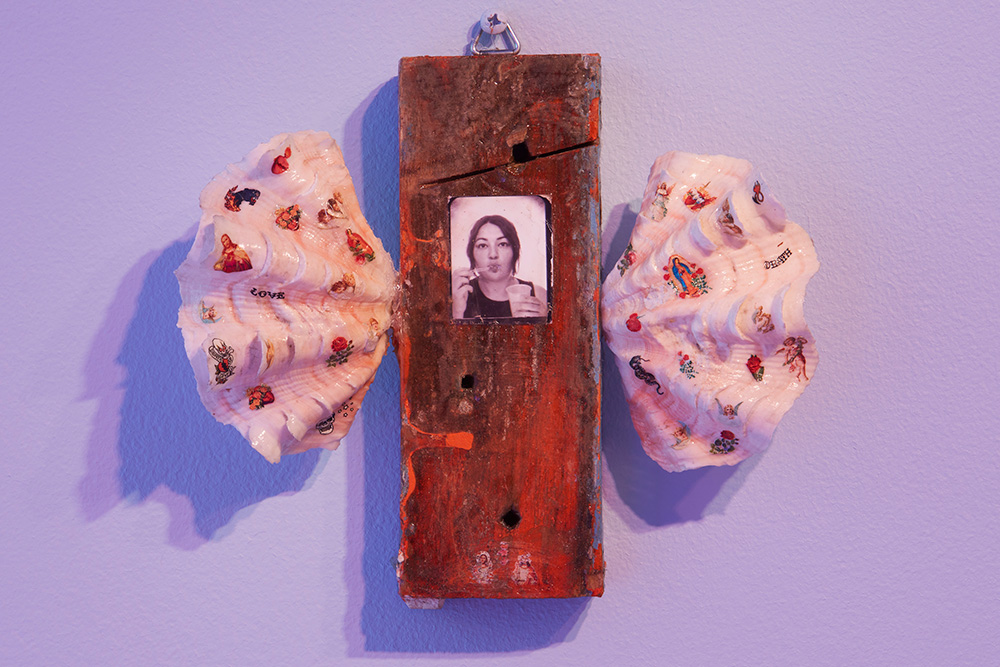Between shorelines and personal origins, Teresa Busuttil’s multidisciplinary practice casts the sea as mirror, archive and connective force.
— Patrice Sharkey
Image: Teresa Busuttil, Over Sea (Self Portrait), 2024, installation view, Primavera 2024: Young Australian Artists, Museum of Contemporary Art Australia, Sydney, 2024. Image courtesy the artist and Museum of Contemporary Art Australia © the artist. Photograph by Zan Wimberley.
Teresa Busuttil (SA)
Between shorelines and personal origins, Teresa Busuttil’s multidisciplinary practice casts the sea as mirror, archive and connective force.
An Australian artist of Maltese heritage working between Tarntanya/Adelaide and Malta, Busuttil holds a Bachelor of Contemporary Art from the University of South Australia. Working across sculpture, installation and moving image, her practice entwines family history and fantasy, constructing environments that are simultaneously devotional and speculative to explore the dualities of emotional and cultural inheritance.
Busuttil’s connection to Malta runs deep: her late father, born on the Mediterranean island before migrating by boat to South Australia, lived his adult life as a diver and fisherman. In the moving image work Passage (2022), archival footage from the Maltese grassroots preservation project Magna Żmien is interwoven with recordings across the waters of Malta and South Australia’s Backstairs Passage. The work entwines her father’s migration story with the cyclical rhythms of the Mediterranean, functioning as both a literal and symbolic threshold between past and present, myth and material, migration and belonging.
In sinners grotto (2023), presented in Primavera 2024: Young Australian Artists at the Museum of Contemporary Art Australia, Busuttil extends these investigations into the sculptural realm. A salvaged fishing boat, severed to stand upright and encrusted with hand-applied shells, is reimagined as both altar and shelter. Its ornate, kitsch interior—evoking religious iconography and teenage adornment in equal measure—reflects the artist’s fascination with aesthetic hybridity. With sinners grotto, Busuttil frames migration not simply as transit but as survival: a negotiation between the sacred and the everyday, between what is carried and what is lost.
Since relocating to Malta in 2024 to realise a major commission for the inaugural Malta Biennale, Busuttil has sustained engagement with the island’s material and cultural landscape. Malta’s dense histories of colonisation, maritime trade and diasporic movement—as well as contemporary dynamics of tourism and gentrification—resonate deeply with her. This return to her homeland has seen Busuttil increasingly adopt an archaeological sensibility in her practice, uncovering, salvaging and recontextualising found materials as a process of embodied reflection and integration.
Busuttil’s installations are defined by a sensitivity to material context and an openness to improvisation. Works often emerge through quiet wonder and intimate engagement with what is at hand. In the floor-based sculptural assemblage time poor dream pool (2024), for example, a 1950s jigsaw puzzle of Malta, discovered in a domestic rubbish bin, is embalmed in murky blue resin, the puzzle pieces drifting apart.
Busuttil belongs to a generation of contemporary artists exploring new visual languages as a means to examine the evolving lineages and politics of place, heritage and migration. Her work navigates expansive themes of history, time and memory with both rigour and poetic sensibility, repeatedly reminding us—literally and figuratively—of the depth and expanse held by the sea.
Essay written by Patrice Sharkey, October 2025.
Patrice Sharkey is an independent curator and writer who lives on Wurundjeri Land in Naarm/Melbourne.

